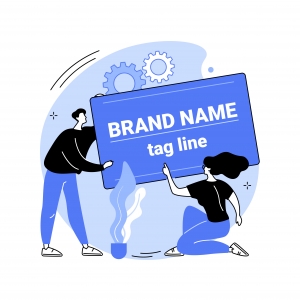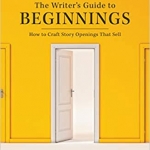Taglines and Blog Post Titles
“Slogans and their accompanying campaigns are some of the best tools advertisers have to connect with their audiences,” according to theladders.com. Also known as catchphrases or tagline, slogans 1. grab attention and 2. build awareness around a product or brand.
As a content writer, I couldn’t help noticing that the well-known taglines listed in the article appear to fall into several different categories::
The actual brand name is included in the tagline:
State Farm – “Like a good neighbor, State Farm is there”
MasterCard – “There are some things money can’t buy. For everything else, there’s Mastercard.”
The tagline emphasizes the benefit to users of the product:
M&M – “Melts in your mouth, not in your hands”
Energizer -” It keeps going and going and going”
Bounty – “The quicker picker upper”
Greyhound – “Leave the driving to us”
Campbell’s Soup – “M’m! M’m! Good!”
New York Times – “All the news that’s fit to print”
Maxwell House – “Good to the last drop”
FedEx – “When there is no tomorrow”
The tagline is largely motivational, appealing to consumers’ desire for significance:
Nike – “Just do it”
De Beers – “A diamond is forever”
The tagline needs a lot of further explanation:
McDonalds – “I’m lovin’ it”
Wendy’s – “Where’s the beef??
General Electric – “Imagination at work”
California Milk Processor Board – “Got milk?”
“You can’t be confused about your mission, the authors caution; otherwise you’ll create a slogan that lacks power and purpose.” (In creating blog post titles, content writers can take heed of three of the Ladder’s guidelines):
- Keep it short and sweet, ideally under eight words.
- Don’t get too fancy or sophisticated with your word choice.
- Be honest
Another of their suggestions, on the other hand, is less applicable to blog marketing: “Don’t give it an expiration date; you want it to transcend time, so don’t include references to current events…” Marketing content writers, we believe at Say It For You, should, in their posts and in the titles of those posts, make use of conversations trending at the time and of current happenings.
In content marketing through blogs, we want the searcher to click on the link to the post, and of course we want search engines to offer our content as a match for readers seeking information and guidance on our topic. More than that, though, a blog post title in itself constitutes a set of implied promises to visitors. In essence, you’re saying, “If you click here, you’ll be led to a post that in fact discusses the topic mentioned in the title. Catchy as the “I’m lovin’ it” and even the “Where’s the beef?” taglines just aren’t going to sere the purpose, since the words don’t match up with those the searchers used.
On the other hand, when titles succeed in appealing to target readers’ need – both for the benefits of a product or service and to satisfy their desire for motivation and significance, that’s nothing but M’m! M’m good!







Follow us online!